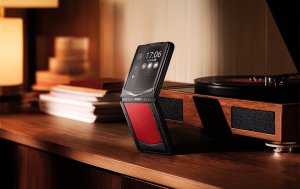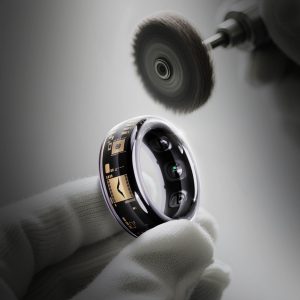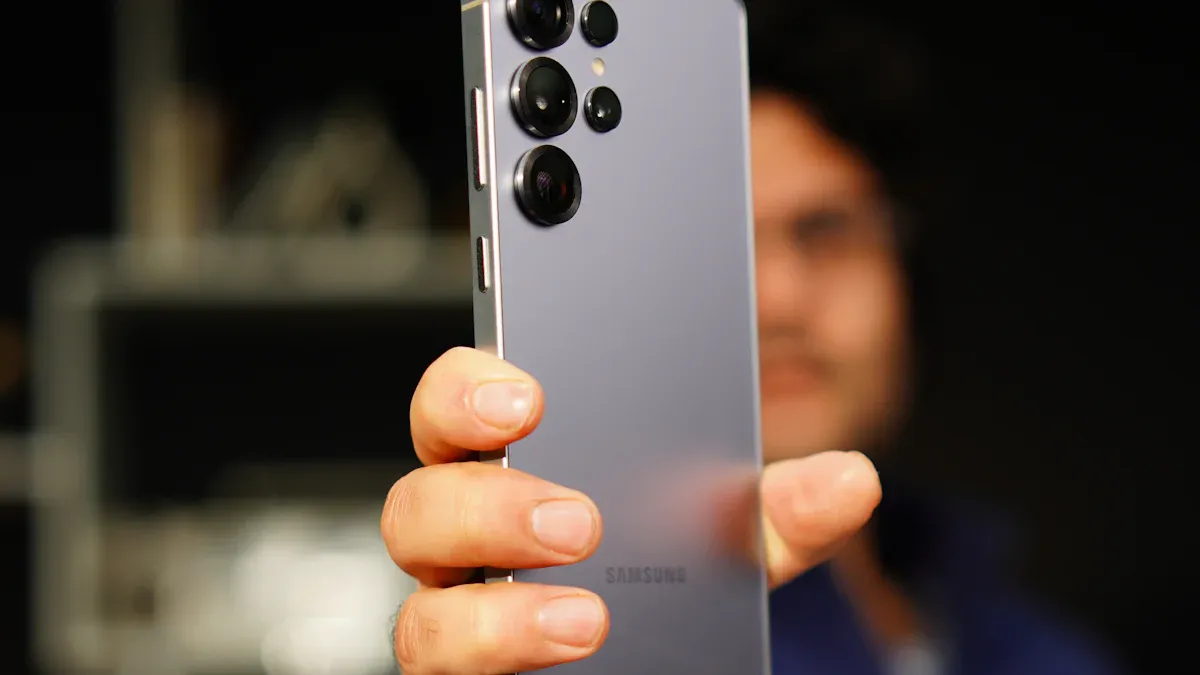
When you pick a smartphone, you want it to be strong. You also want it to feel nice in your hand. In 2025, the top 5 strongest phone frame materials are titanium, steel ceramic and adamantium phone frame, carbon fiber, magnesium alloy, and premium aluminum. Each frame material changes how good the phone is. It also changes how you use the phone. Good quality is important for strength and looks. Most high-end phones use titanium or other strong metals for their frames. The chart below shows which brands use these strong frame materials.
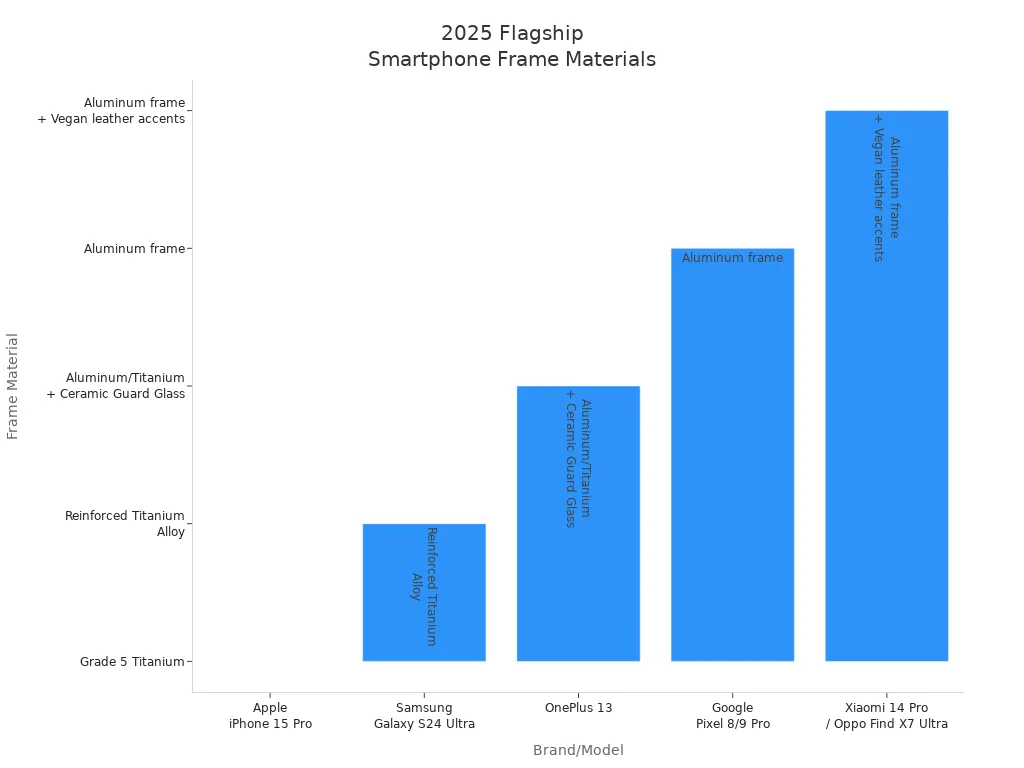
Metal-bodied smartphones are the most popular. They are best for protection and new material ideas.
Key Takeaways
Titanium is strong, light, and looks nice. It does not rust or scratch easily. This makes it great for fancy smartphones.
Steel ceramic frames are very tough and feel fancy. But they are heavy and cost more to make.
Carbon fiber frames are very strong and very light. They make phones look different and help signals work better.
Magnesium alloy frames are the lightest metal choice. They protect phones well and help keep them cool. But they need special coatings so they do not rust.
Picking the best frame material depends on what you want. Think about strength, weight, comfort, and style. This helps you get a phone that lasts and feels good.
Why Frame Material Matters
Durability
You want your smartphone to last a long time. The frame helps your phone stay strong. Companies test frames by bending and scratching them. These tests show how much force the phone can take before it bends or breaks. You might see videos where people try to bend or scratch phones. Titanium and ceramic frames do very well in these tests. They make your phone stronger and protect it from drops and bumps.
A strong frame also keeps out water and dust. If your phone has a tight metal body, water and dust cannot get inside easily. This protects the inside parts and helps your phone last longer. The right frame material makes the phone feel solid. Your phone keeps working even after lots of use. Durability is not just about drops. It also means your phone stays nice over time.
User Experience
The frame material changes how your phone feels to hold. Some frames feel cool and smooth. Others feel warm or have texture. You notice this every time you pick up your phone. Here is a table that shows how different materials feel:
Material Type | Characteristics | Impact on Tactile Feel and Comfort |
|---|---|---|
Metal (Aluminum, Magnesium) | Durable, premium feel, strong, good at cooling | Feels fancy and comfy for long use because it is tough and cool |
Plastic | Light, bendy, easy to shape, cheap | Feels light and bendy, often in cheaper phones |
Glass (Toughened) | Smooth, fancy, works with wireless charging, breaks easily | Feels smooth and fancy, but needs extra protection |
Ceramic and Composite | Very strong, hard to scratch, not too heavy | Feels tough and fancy, adds comfort and style |
You can feel the difference with a ceramic or metal frame. These frames make the phone feel fancy and high quality. They also help keep your phone cool when you use it a lot. A strong frame helps keep water and dust out, so your phone is safer. When you choose a phone, think about how the frame will feel every day. The right frame gives you both strength and comfort.
Titanium

Overview
Titanium is used in many top phones in 2025. This metal makes phones strong but not heavy. Phone makers like titanium for its cool look and nice feel. You can find it in phones like the Samsung Galaxy S25 Edge. The titanium frame gives style and keeps the phone safe. Titanium does not scratch or show fingerprints easily. This helps your phone look new for a long time.
Strengths
Titanium makes your phone stronger. It helps protect your phone from drops and bumps. Here are some reasons why titanium is good for phone frames:
Titanium is strong but still light to hold.
Grade 5 titanium is almost as strong as steel but weighs less.
This means your phone is tough but not heavy.
Titanium does not rust, so sweat and water will not hurt it.
It helps move heat away from the phone’s parts.
This keeps your phone cool when you use it a lot.
Titanium is safe for your skin.
The finish hides scratches and fingerprints, so your phone looks clean.
Tests show these strengths are real. For example, the Galaxy S25 Edge did well in bend and scratch tests. The titanium frame kept the phone safe even with strong force.
Pros & Cons
A phone with a titanium frame has many good points:
It is stronger than aluminum and some steels.
It feels light, so it is easy to hold.
It does not rust or get damaged by water.
Titanium looks fancy and different from other metals.
It does not show fingerprints, so it stays clean.
But there are some downsides:
Titanium costs more than other metals, so phones cost more.
It is hard to shape, so making frames takes more work.
Some people like the look of steel or aluminum better.
Tip: If you want a phone that is strong, light, and stylish, titanium is a great choice for 2025.
Steel Ceramic and Adamantium Phone Frame
Steel
Steel is used in many top phones in 2025. Makers pick steel because it is strong and shiny. The steel ceramic and adamantium phone frame feels solid in your hand. Steel does not bend easily, so it keeps your phone safe. If you drop your phone, steel helps protect it. Luxury phones like the Vertu Metavertu Max use 316L stainless steel. This steel does not rust and is safe for your skin. The frame looks nice and lasts a long time. Steel makes the phone heavier, so it feels fancy. Some top Android phones use steel for extra strength.
Ceramic
Ceramic frames are special in the steel ceramic and adamantium phone frame group. You can feel the smooth, jade-like surface right away. Ceramic does not scratch easily and stays shiny for years. Many top phones, like the Vertu Metavertu Max, use strong ceramics such as zirconia. These ceramics are tougher and less likely to break than old ones. Ceramic also helps with signals because it does not carry electricity. But ceramic frames are heavier and hard to make.
Here is a table that shows the good and bad sides of ceramic frames:
Aspect | Benefits | Drawbacks |
|---|---|---|
Durability | Very strong, resists wear and rust | Can still break even though it is tougher |
Thermal Properties | Handles heat well, keeps cool, good at blocking heat | Can expand with heat, does not move heat quickly |
Hardness & Stability | Very hard, stays stable, stronger than most ceramics and metals | |
Texture & Feel | Feels smooth like jade, looks fancy | |
Manufacturing | Hard and expensive to make (can take up to 168 hours) | |
Weight | Heavier than plastic and some metals | |
Signal Performance | Can block signals a bit, needs special antenna design |
Adamantium Comparison
People talk about the steel ceramic and adamantium phone frame when they want the strongest phone. Adamantium is not real for phones. It is just a symbol for super strength from superhero stories. When you compare real materials to this, steel and ceramic do well. Steel is tough and makes the phone strong. Ceramic does not scratch and feels fancy. The steel ceramic and adamantium phone frame is known for being strong and stylish. You get great protection and a fancy look with these materials.
Carbon Fiber
Overview
Some of the fanciest phones in 2025 use carbon fiber. This material is special because it looks cool and works well. The Vertu METAVERTU Max is a luxury phone with aerospace-grade carbon fiber. You can see the black woven pattern right away. It feels smooth and looks new. Phone makers like carbon fiber because it is light and looks fancy. When you hold a phone with this frame, you notice it feels different. The phone is strong but not heavy. The finish does not get dirty or old fast.
Strengths
Carbon fiber makes your phone strong without making it heavy. It has high tensile strength, so it can take a lot of force. Carbon fiber is up to five times stronger than steel. It is also about 70% lighter than steel. This is great for slim and fancy phones that need to be tough. Carbon fiber is stiff, so your phone keeps its shape if dropped. You also get better signal than with old metal frames. The monocoque design with carbon fiber means no heavy metal core. This keeps your phone thin and easy to carry.
Pros & Cons
Here are some good and bad things about carbon fiber phone frames:
Pros:
Looks fancy with a special woven pattern.
Very strong and hard to scratch.
Keeps your phone looking new for a long time.
Better signal than many metal frames.
Good for people who want strong, fancy protection.
Cons:
Not as many ways to customize as plastic or silicone.
Can crack if dropped really hard.
Might have a small chance of signal problems.
Costs more because it is a premium material.
Does not change color or look over time.
Tip: If you want a fancy phone that is light and strong, carbon fiber is a good pick.
Magnesium Alloy
Overview
Some of the lightest phones in 2025 use magnesium alloy frames. Magnesium alloy is one of the lightest metals for phone frames. Its density is about 1.8 g/cm³. This makes your phone feel very light in your hand. Magnesium alloy is strong for its weight. You get a tough frame without extra heaviness. Makers can make frames as thin as 0.6 mm. The phone still stays strong and sturdy. Magnesium alloy also absorbs shocks well. It helps protect your phone from drops and bumps. It resists wear, so your phone lasts longer. Magnesium alloy can block electromagnetic interference. This helps your phone work better in busy places.
Strengths
Magnesium alloy gives you many good things. Your phone is strong and light, so it is easy to carry. The material helps your phone stay cool. It moves heat away from the inside parts. Magnesium alloy frames help your phone keep a strong signal. You do not lose connection easily. The table below shows how magnesium alloy and aluminum alloy compare:
Material | Density (g/cm³) | Strength-to-Weight Ratio | Notes on Usage and Challenges |
|---|---|---|---|
Magnesium Alloys | ~1.8 | Highest among structural metals | Lightest metal, ideal for weight-critical devices; needs special coatings to prevent corrosion |
Aluminum Alloys | ~2.7 | Lower than magnesium alloys | Heavier but more common and cost-effective; easier to manufacture |
Magnesium alloy frames make your phone light and strong. They are great for people who want a slim phone that is still tough.
Pros & Cons
You should know the main good and bad points before picking a magnesium alloy frame.
Advantages:
Very light, so your phone is easy to hold.
Strong for its weight, so your phone stays sturdy.
Blocks unwanted signals and cuts down interference.
Helps your phone stay cool when you use it a lot.
Easy to recycle, which is good for the planet.
Disadvantages:
Needs a special coating to stop rust, especially in wet places.
Can cost more than aluminum frames.
Harder to shape into tricky designs.
Can rust if it touches other metals.
Tip: If you want a phone that is light, strong, and modern, magnesium alloy is a smart pick. Just make sure it has good surface protection to keep it looking nice.
Comparison Table
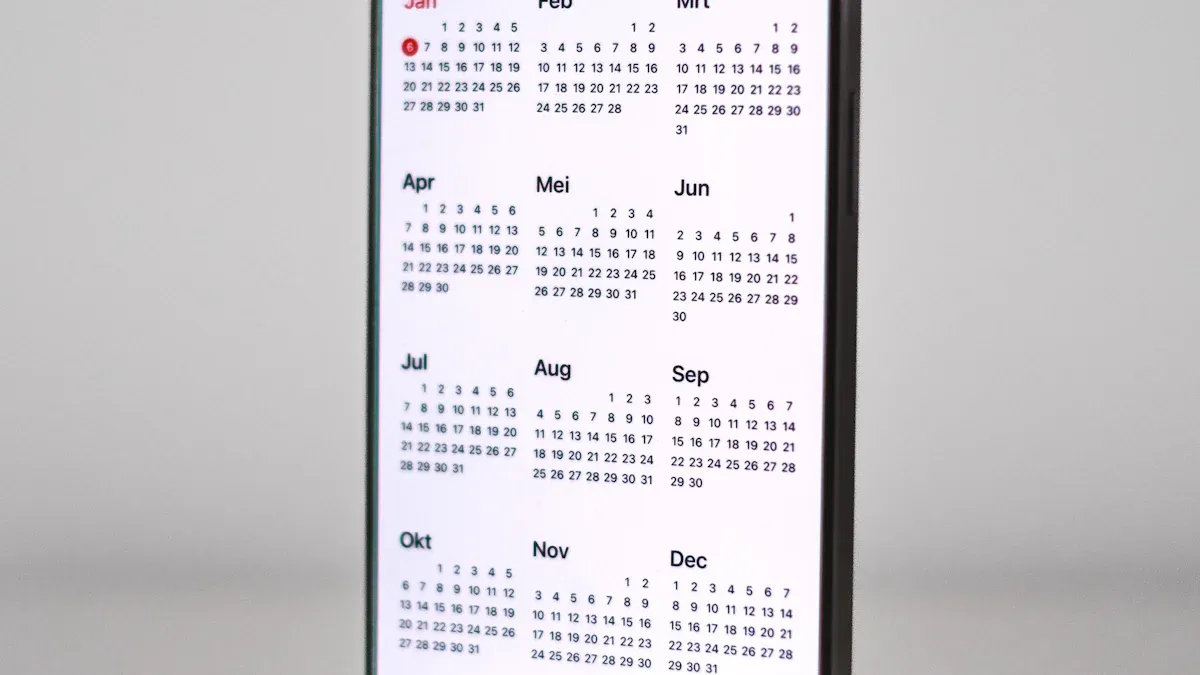
When you pick a smartphone, the frame material matters. The right frame can make your phone feel strong or light. Some frames even make your phone feel fancy. The table below shows how the top frame materials compare for 2025 phones. It helps you see the differences in strength, weight, comfort, and which phones use each one.
Frame Material | Strengths | Weaknesses | Weight | Feel & Comfort | Notable Devices |
|---|---|---|---|---|---|
Titanium | High strength, light, resists rust | Expensive, hard to shape | Light | Cool, premium, solid grip | Samsung Galaxy S25 Ultra, iPhone 16 Pro |
Steel Ceramic | Very tough, scratch-resistant, stylish | Heavy, costly to produce | Heavy | Smooth, luxurious, solid | Vertu Metavertu Max |
Carbon Fiber | Super strong, very light, keeps shape | Can crack under extreme force | Very Light | Textured, modern, unique | Vertu Metavertu Max |
Magnesium Alloy | Lightest metal, absorbs shock, cools well | Needs coating, can corrode | Very Light | Soft, comfortable, modern | Used in select gaming phones |
Aluminum | Good strength, easy to build, cost-effective | Less strong than titanium or steel | Light | Smooth, cool, familiar | Motorola Razr Plus, Google Pixel 9 Pro, OnePlus 13 |
Tip: If you want a phone that feels fancy and lasts, check the frame. Titanium and steel ceramic frames are very strong and feel nice. Carbon fiber and magnesium alloy keep your phone light but tough. Aluminum frames are a good choice for most people.
You can see how brands use these materials to make better phones. The Samsung Galaxy S25 Ultra and iPhone 16 Pro use titanium for a strong, light feel. The Vertu Metavertu Max uses steel ceramic and carbon fiber for a mix of style and strength. Motorola Razr Plus uses aluminum to make the phone slim and sturdy, which helps with folding phones. Each frame material changes how your phone feels and how long it lasts. When you choose your next phone, think about which frame fits your needs for comfort, weight, and strength.
Choosing the Right Material
When you get a smartphone, you want a frame that fits your life. Each material has its own special features. Think about how you use your phone every day. Do you want a phone that is light in your pocket? Do you like a fancy look, or do you need a phone that can take drops and bumps?
Here is a table to help you see the differences between titanium and aluminum, which are both very popular:
Factor | Titanium Alloy | Aluminum Alloy |
|---|---|---|
Strength | Very rigid, resists bending | Good strength, more flexible |
Weight | Heavier, solid feel | Lighter, easy to carry |
Durability | High, keeps shape in thin designs | Durable, but can bend in thin frames |
Thermal Management | Less heat transfer | Better at cooling |
Scratch Resistance | Hard surface, resists scratches | Softer, scratches more easily |
Price | Expensive | More affordable |
Sustainability | Resource-intensive, used in select models | Highly recyclable, eco-friendly |
You should also think about what matters most to you:
If you want a premium, weighty feel, titanium gives you a solid touch. It is great for thin phones that need to be strong.
If you like a light phone for long use, aluminum is a good choice. It feels cool and smooth, and comes in many colors.
If you care about the environment, aluminum is a top pick. Many brands use recycled aluminum to help the planet.
If you want a phone that stays looking new, titanium does not scratch easily from keys or coins.
Tip: Think about how you use your phone each day. If you drop your phone a lot, a strong frame like titanium protects it better. If you want a phone that is light and modern, aluminum or magnesium alloy could be best for you.
Phones in 2025 are made to look good, last long, and be better for the planet. You can find a frame material that fits your needs and style. Pick carefully, and your phone will work well for you every day.
You want a phone that feels nice and lasts a long time. Premium frame materials like titanium, steel ceramic, carbon fiber, and magnesium alloy give you good quality and look cool. Phones with these materials keep their value better as they get older. The table below shows how these materials help phones stay worth more:
Phone Model | Frame Material | Resale Retention Rate |
|---|---|---|
iPhone 15 Pro Max | Titanium | |
Google Pixel 8 Pro | Premium mix | ~68% after 1 year |
Pick premium materials if you want the best quality, a nice feel, and good resale value.
FAQ
What is the strongest phone frame material in 2025?
Titanium stands out as the strongest frame material for most smartphones in 2025. You get a great mix of strength and lightness. Many flagship phones use titanium for its durability and premium feel.
Does a ceramic frame make my phone more scratch-resistant?
Yes, ceramic frames resist scratches much better than metal or plastic. You will notice fewer marks from keys or coins. Ceramic also keeps its shine for years, so your phone looks new longer.
Why do luxury phones use carbon fiber?
Luxury phones use carbon fiber because it is very strong and extremely light. You get a unique look and a comfortable grip. Carbon fiber also helps your phone stay slim without losing strength.
Is magnesium alloy safe for daily use?
Magnesium alloy is safe for you to use every day. It feels light and cool in your hand. Makers add special coatings to prevent rust and keep the frame looking good.
Will a stronger frame protect my phone from all drops?
A stronger frame helps protect your phone from many drops and bumps. However, no frame can make your phone unbreakable. You should still use a case or screen protector for extra safety.

